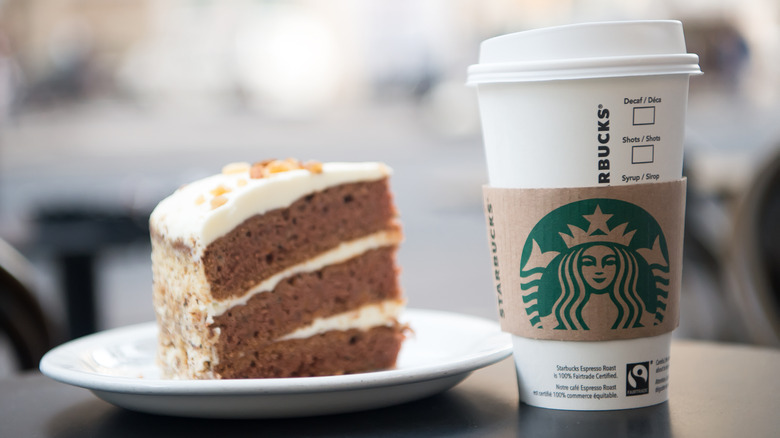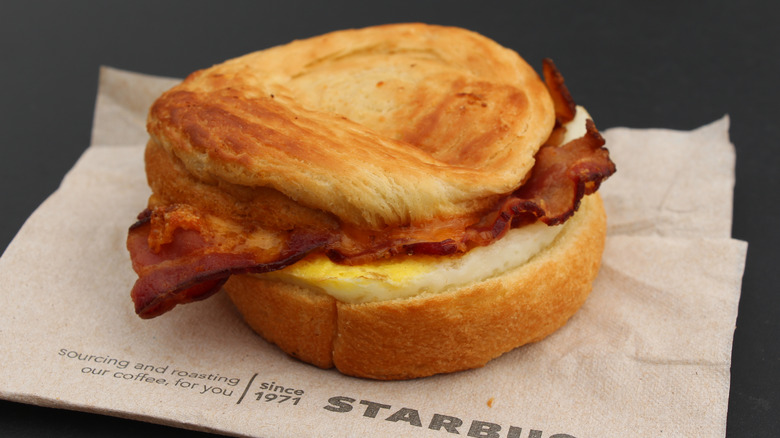What Does Starbucks Do With Its Leftover Food?
Starbucks is one of the most recognized names in coffee. With rotating seasonal menus, and a wide variety of year-round drinks, there is something for almost anyone to enjoy.
Starbucks started serving food alongside their menu of endlessly customizable drinks in 2003, and you can now purchase bagels, breakfast sandwiches, and cake pops at most locations, per Brittanica. They have gradually introduced more foods to their menu, like the sous-vide eggs bites, the Impossible breakfast sandwich (which features the popular plant-based meat alternative patty), and a variety of wraps.
The company prides itself on environmentally beneficial programs. Starbucks started Grounds for Your Garden in 1995, which allows visitors to take leftover coffee grounds as a gardening tool, and hopes to eventually get rid of all plastic straws and encourage the use of their sippy-cup style lids instead (per NPR). But what happens when the store closes for the night and that food hasn't sold?
The food doesn't go to waste
The commitment to end food insecurity is detailed on the Starbucks Hunger Relief page. At the end of each work day, Starbucks employees gather unsold food. A refrigerated truck transports it to a distribution center, where it is then sorted. The distribution centers take that food to local food banks, where it can be handed out to people in need in that community.
Through this plan, Starbucks claims they have saved over 49.7 million pounds of food from going to waste. According to a 2019 report from Starbucks FoodShare program, over 20 million people had been fed through the program. The LA Food Bank says that in Los Angeles County alone, this program is expected to provide millions of pounds of food each year throughout the city.
The company's goal is to invest $100 million into hunger relief efforts over the next ten years as Starbucks continues to provide food for those in need and reduce food waste.

